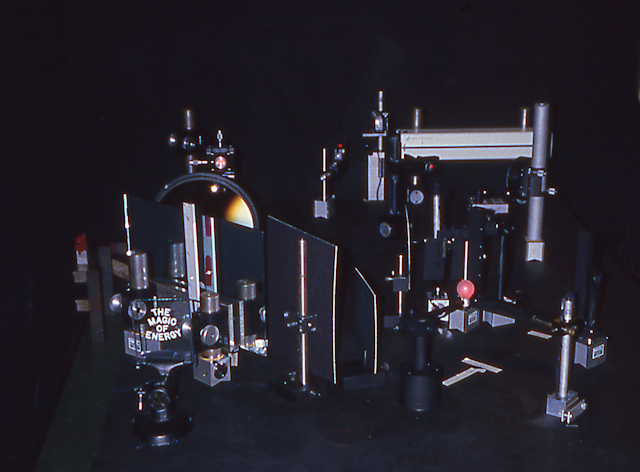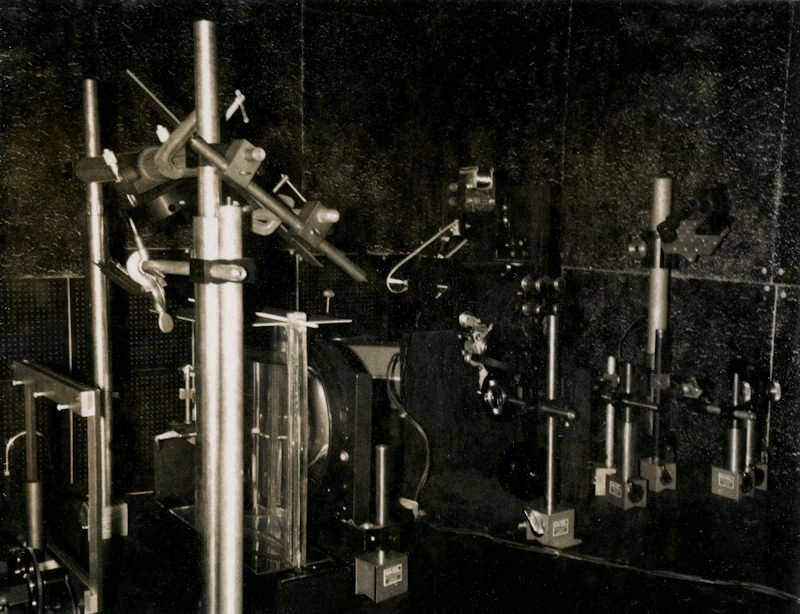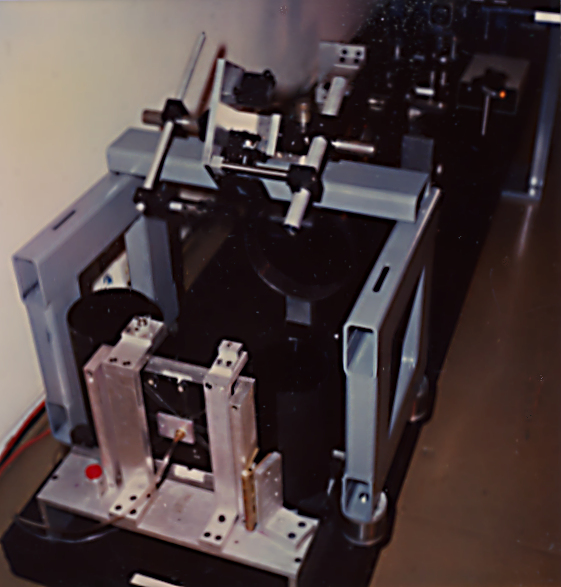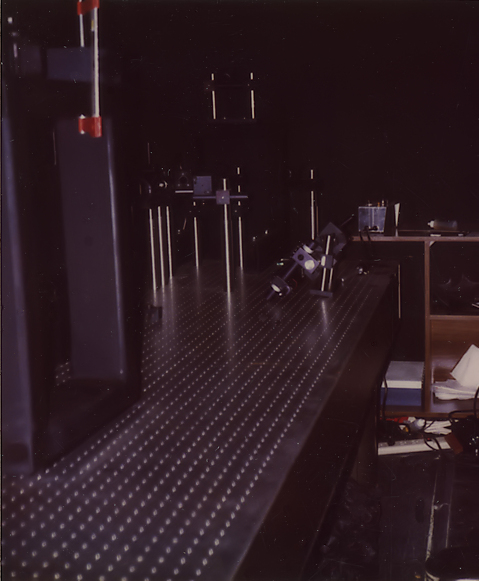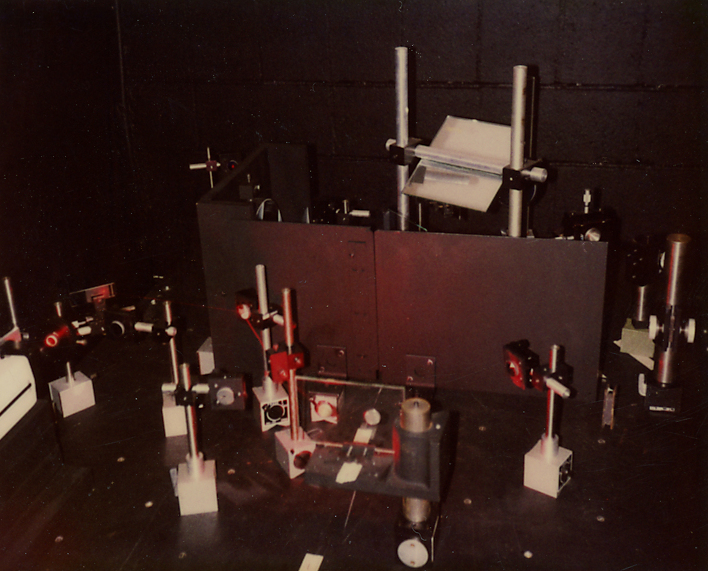The practice of holography is as much an art as a science, as understanding the physics behind holography doesn't ensure that one can make a good hologram. This section of my site is on the art behind the art and is focused on technology.
The display consisted of real image projections of a hologram of a light bulb and a separate hologram of two-dimensional lettering. When reconstructed with a laser, a viewer would see an image of a light bulb superimposed with the lettering floating in space. Note that unlike a mirror, these images were real and could be focused at any plane through the images. The result was mesmerizing and asked the viewer to question how it was possible to put a hand through what appeared to be solid objects.
The holograms were exhibited at the Arizona Museum of Science and Technology. In this installation the holograms were mounted in a wall behind which a laser, beam expander, and spatial filter were used to reconstruct the real images.
I began making integral holographic systems around 1972. Over the next ten years I developed several enhanced "cameras," made art and commercial holograms with them, and made holographic apparatuses for various clients.
Integral holography (also called multiplex holography) combines motion picture photography and one-step rainbow holography to record a series of narrow side by side holographic images each of which comprises a separate viewpoint of the subject. The object (a person, for example) is generally filmed on a rotating platform. The resulting hologram (a "rainbow" hologram) is viewable in white light and can incorporate movement if carefully choreographed. Othewise the reconstructed image warps like taffy.
Integral holograms are quite difficult to make. An integral hologram might comprise 2000 separate narrow vertical "strip" holograms which are made in step by step fashion. Any difference in modulation among the images results in differences in brightness and a resulting objectionable picket fence effect. Avoiding variation of modulation is to a large part where the art of making this type of hologram comes in.
My first integral holography "camera" was designed for 8" x 10" holographic glass plates. I built a translation stage for my Mitchell 35mm motion picture camera and used it for making the film that fit into a 35mm film gate on the holographic camera pictured above. A step and repeat analog controller made each successive hologram on the plate which was then developed and bleached.
I developed this third system between 1988 and 1990 for the Australian artist Alexander. This system had several refinements over my earlier systems. Rather than use an oil-filled convex cylindrical lens. I opted to use a solid acryllic aspheric plano convex cylindrical lens. This lens was designed by Dr. Murty Mantravadi and fabricated and polished in New York. The 35mm film transport and beam expansion lenses were mounted in an adjustable focus apparatus of my design. The holographic film transport incorporated a patented transport mechanism invented by Ole Gunst and myself. This transport was designed to move the film in adjustable, equally-spaced intervals while minimizing the stress on the holographic film. The entire system was designed for maximum stability to insure that all holograms would have uniform modulation. The system was magnetically mounted to a Newport holographic table with Newport pneumatic isolation mounts and installed in a sound and vibration isolated room.
Steve Benton of Poloroid invented the rainbow hologram. This type of hologram is normally made in two steps. In the first step a laser transmission hologram is made of an object or objects generally with depth limited to less than six inches. This hologram (H1) becomes the object for a second hologram which becomes the rainbow hologram (H2).
In 1990 Dr. Murty Mantravadi and I invented and patented a technology for making rainbow holograms in one step thus greatly simplifying the apparatus and time required to make a rainbow hologram.
Over a period of six years I designed, re-designed and refined an integral holographc camera which I installed on an optical isolation table in a specially designed sound-damped room in my lab. This system had an oil-filled plano convex lens to focus the 35mm film images onto the holographic film plane. The film transport was designed to hold 8" high 8E75 holographic roll film. The film transport had a roller transport mechanism with a vacuum gate. A computer controlled system ran the apparatus.
The image above pictures one of my systems - sans isolation table - ready for transport to Holo Technologies of Costa Mesa. After subsequent modification the device was used to make a rainbow hologram of a surgeon removing his mask. Subsequently, this hologram was used as the H1 in making an embossing master. The resulting embossed hologram appeared on the record cover of "Heartlands - The Surgeons" produced by Ultra-Art Pty, ltd.
